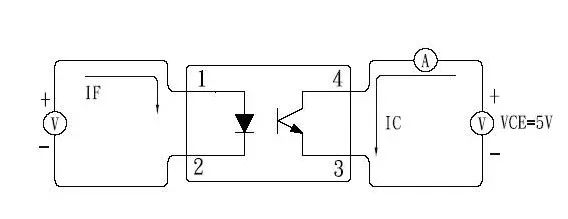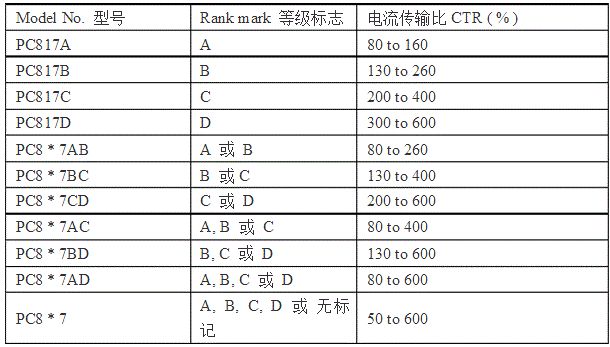CTR: The minimum value of the ratio of the current of the luminous tube to the current of the phototransistor.
Isolation voltage: the minimum value of the isolation voltage of the luminous tube and photosensitive transistor.
The technical parameters of optocouplers mainly include light-emitting diode forward voltage drop VF, forward current IF, current transmission ratio CTR, insulation resistance between the input stage and output stage, and collector-emitter reverse breakdown voltage V(BR) CEO, collector-emitter saturation voltage drop VCE(sat). In addition, parameters such as rise time, fall time, delay time and storage time need to be considered when transmitting digital signals.
Collector-emitter voltage: When is the minimum withstand voltage between the collector and the emitter, when will the optocoupler turn on? When will it end? The CTR-IF characteristic curve of an ordinary optocoupler is nonlinear, and when the IF is small The nonlinear distortion is particularly serious, so it is not suitable for transmitting analog signals. The CTR-IF characteristic curve of the linear optocoupler has good linearity, especially when transmitting small signals, its AC current transmission ratio (ΔCTR=ΔIC/ΔIF) is very close to the DC current transmission ratio CTR value. Therefore, it is suitable for transmitting analog voltage or current signals and can make a linear relationship between output and input. This is its important feature.
The current transfer ratio is an important parameter of the optocoupler, which is usually expressed by the direct current transfer ratio. When the output voltage remains constant, it is equal to the percentage of the DC output current IC to the DC input current IF. Using a photosensitive triode optocoupler, the range of CTR is mostly 20%~300% (such as 4N35), while pc817 is 80%~160%, and Taiwan Everlight (such as EL817) can reach 50%~600%. This shows that to obtain the same output current, the latter only needs a smaller input current. Therefore, the CTR parameter is somewhat similar to the hFE of the transistor.
The use of optocouplers is mainly to provide isolation between the input circuit and the output circuit. When designing the circuit, the following optocoupler devices must be selected and must comply with domestic and international standards for isolation breakdown voltage; produced by Taiwan Everlight The EL817 series (such as EL817B-F, EL817C-F) optical couplers produced are currently widely used in China. In view of the switching characteristics of this type of optocoupler, its linearity is poor, it is suitable for transmitting digital signals (high and low level), and can be used for the output isolation of the single-chip microcomputer; the selected optocoupler must have a higher coupling coefficient.

In the isolation of switching power supply and when designing optocoupler feedback switching power supply, the model and parameters of linear optocoupler must be selected correctly. In addition to the selection principle of ordinary optocoupler, the following principles must also be followed:
1. It is recommended to use a linear optocoupler. Its characteristic is that the CTR value can be adjusted linearly within a certain range.
2. The allowable range of the current transfer ratio (CTR) of the optocoupler is 50% to 200%. This is because when CTR5.0mA), the duty cycle of the monolithic switching power supply IC can be controlled normally, which will increase the power consumption of the optocoupler. If CTR>200%, the single-chip switching power supply may be triggered by mistake when the circuit is started or when the load changes suddenly, affecting normal output.
3. If an amplifier circuit is used to drive the photocoupler, it must be carefully designed to ensure that it can compensate for the temperature instability and drift of the coupler.
The following are some parameters of the PC817 series of common photocouplers (for reference only):

Bakelite Material,Bakelite Plastic,Bakelite Made From,Bakelite Synthetics
WENZHOU TENGCAI ELECTRIC CO.,LTD , https://www.tengcaielectric.com